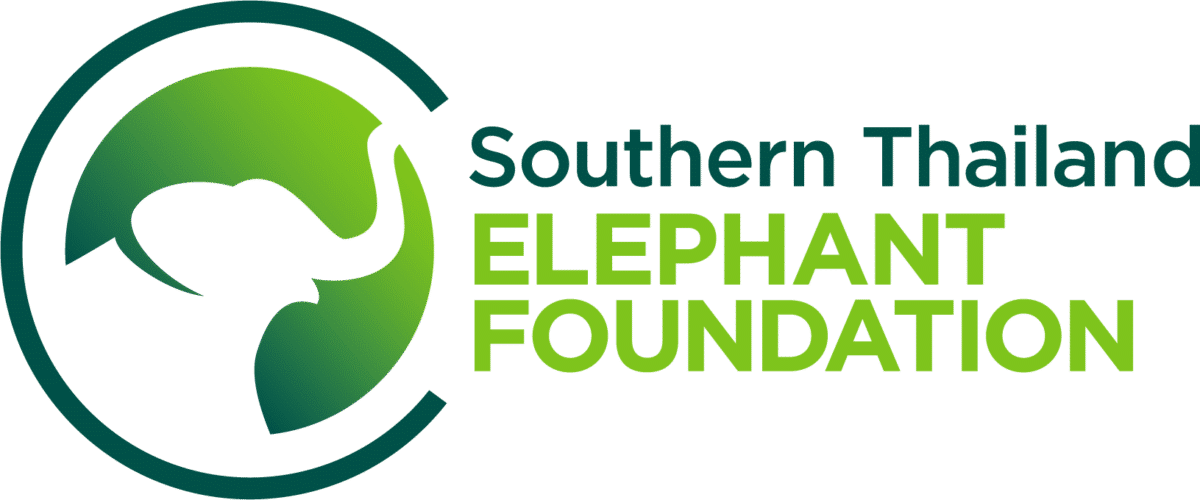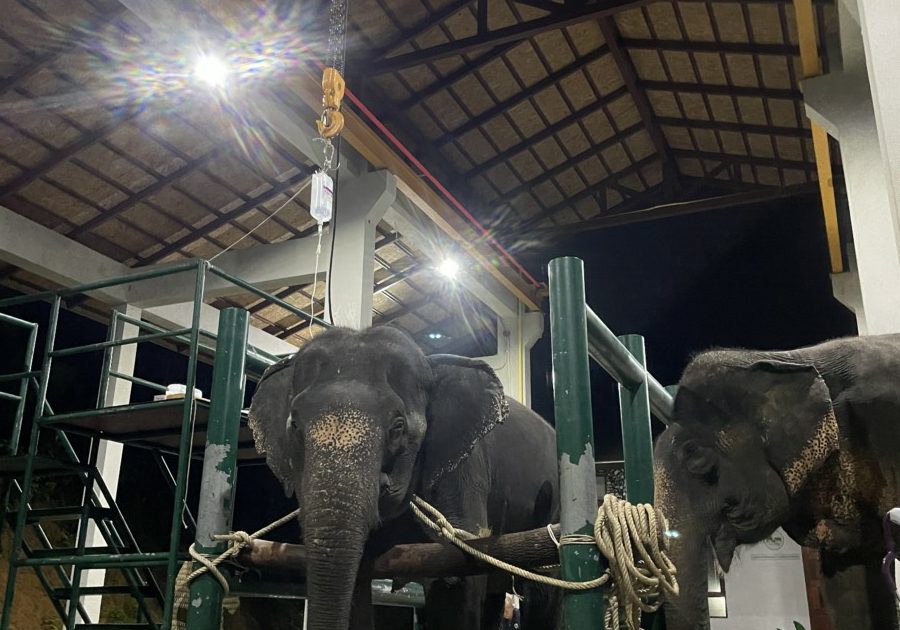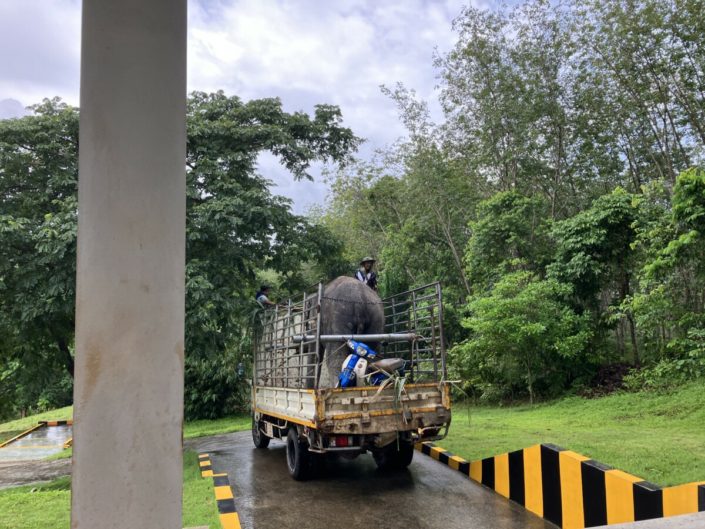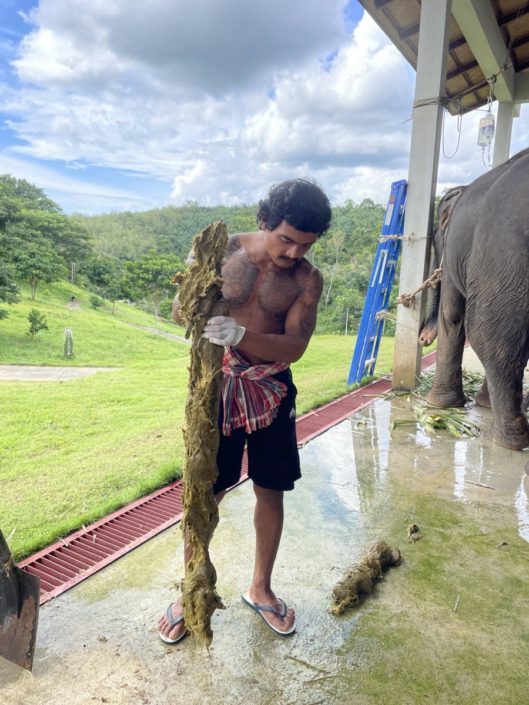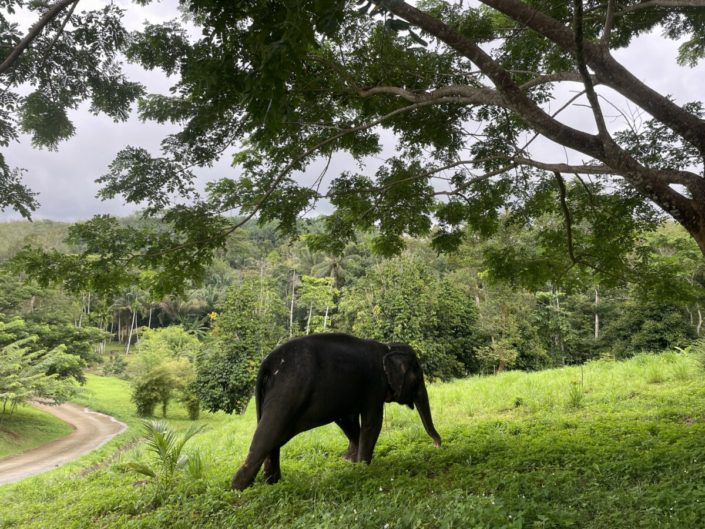Duk Dik and Paula in the elephant barn at the STEF Veterinary Centre
Hospital admissions make life even busier for our two vets, Dr Aon and Dr Mink, because there has to be a vet on site at all times when an elephant patient is at the veterinary centre. So, to have two patients, both requiring intensive care and monitoring, is even more demanding, especially as the vets also need to continue making daily visits with the mobile clinic to other elephants in the region.
The first of the two elephants to be admitted was Pung Paula who had been suffering from diarrhoea for a week after escaping and eating too many local crops and bananas. Elephants tend to be predisposed to intestinal problems – colic, constipation, diarrhoea – especially domesticated elephants if they have the wrong diet. It may seem a trivial thing, but colic can be life-threatening if not treated in time (see our news story for more information about elephant colic) .
On arrival, the 75 year-old Paula continued to eat a reasonable amount of food, and it was not clear exactly what was wrong, but it soon became apparent that she was not defaecating as much as she was eating. Dr Aon was suspicious that she might have a blockage, and so gave her intestinal stimulants as well as fluids and antibiotics to treat any internal infection. After monitoring and treatment, Paula began to recover and, eventually, three weeks after admission, she was able to excrete normally. However, before Paula was discharged, the team received an emergency call that evening from a mahout who said he was bringing his elephant, Duk Dik, to the hospital because she also had severe colic.
When Duk Dik arrived later that night, she was weak and dehydrated. Her mahout had tried to help her by giving her an enema, but she had managed to pass only a tiny amount of dung. She had apparently eaten a large amount of “jaggery palm” or “wine palm” (Caryota urens). The team immediately gave her fluids and medication to help with the abdominal pain and, like Paula, she was also put on intestinal stimulants. During her 12 days of treatment, Duk Dik passed a dung motion that was 206cm long (that’s very long, even for an elephant!), but eventually her blood biochemical parameters and functional digestion returned to normal. By the time Duk Dik went home, our vets were exhausted, but nonetheless very pleased to have returned these two elephants to good health.
[Click on photos to enlarge and read captions]
